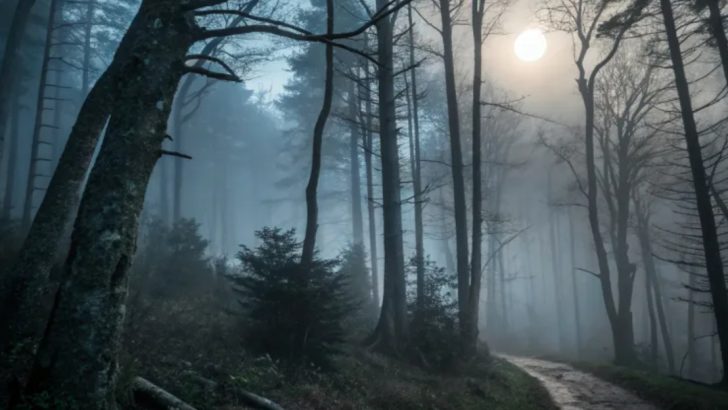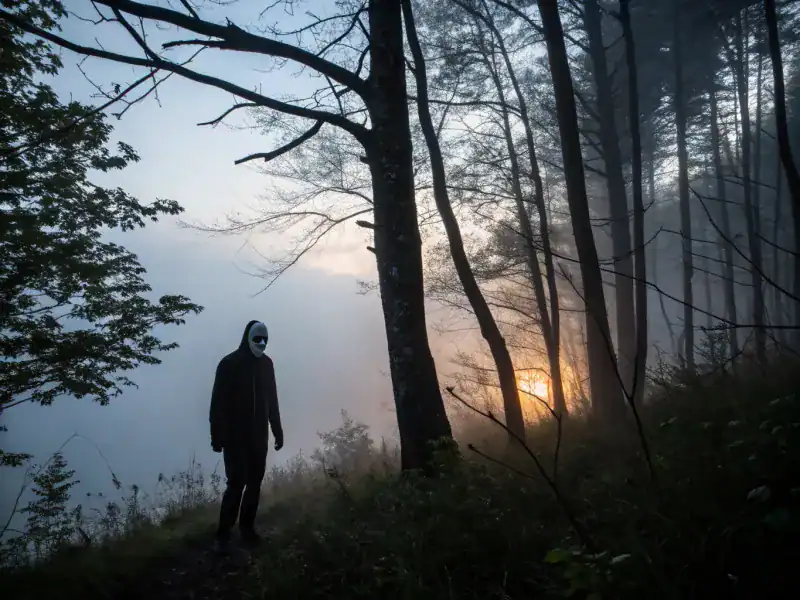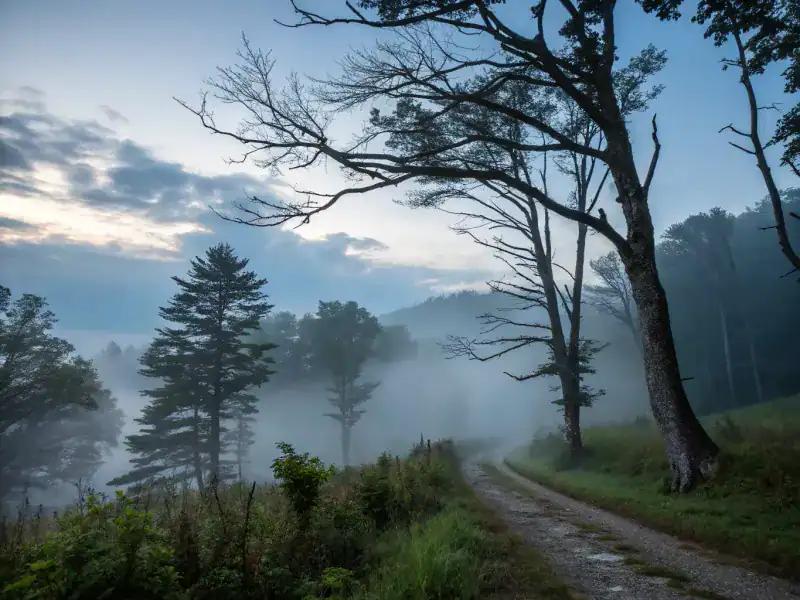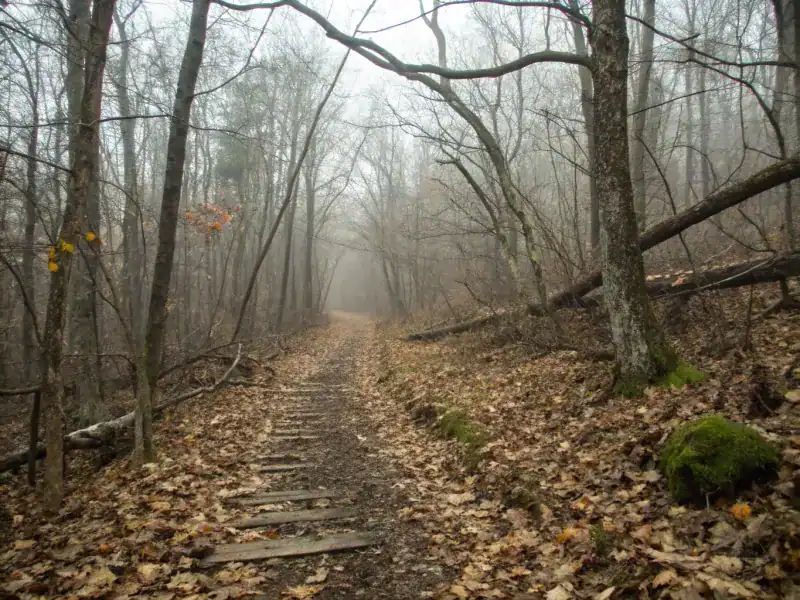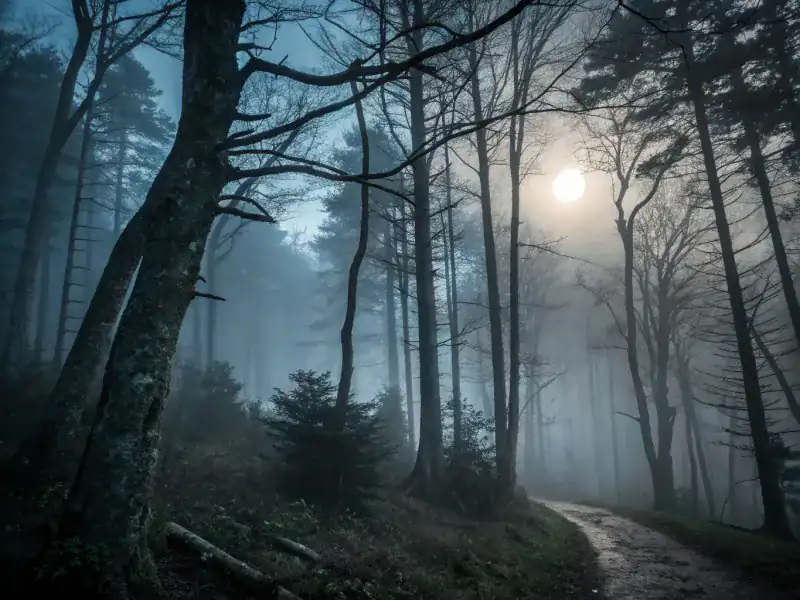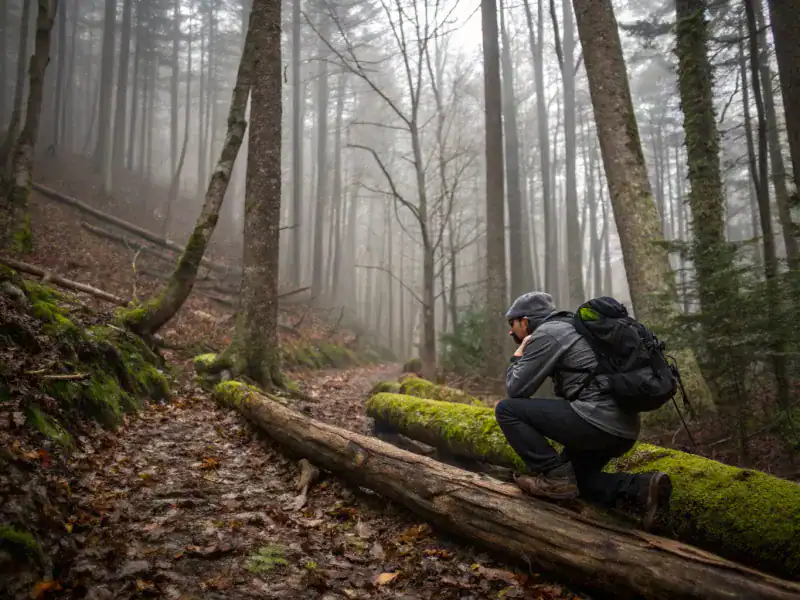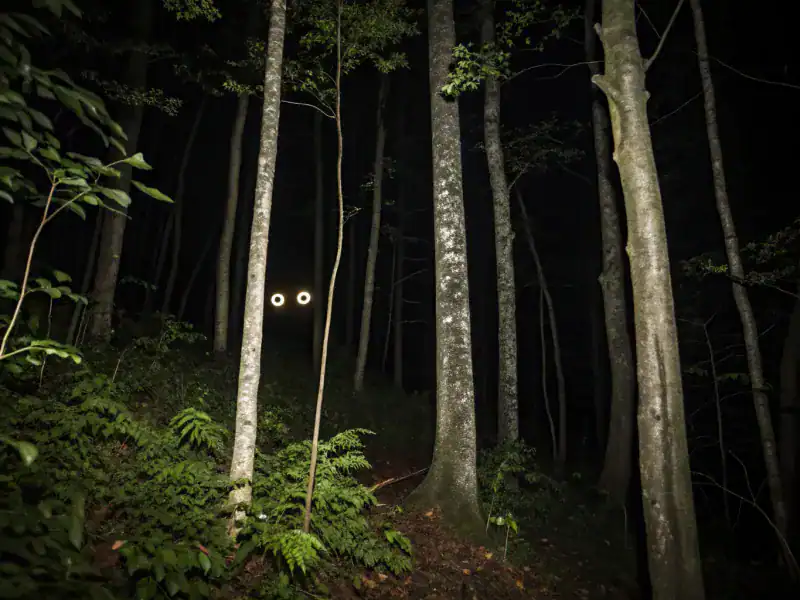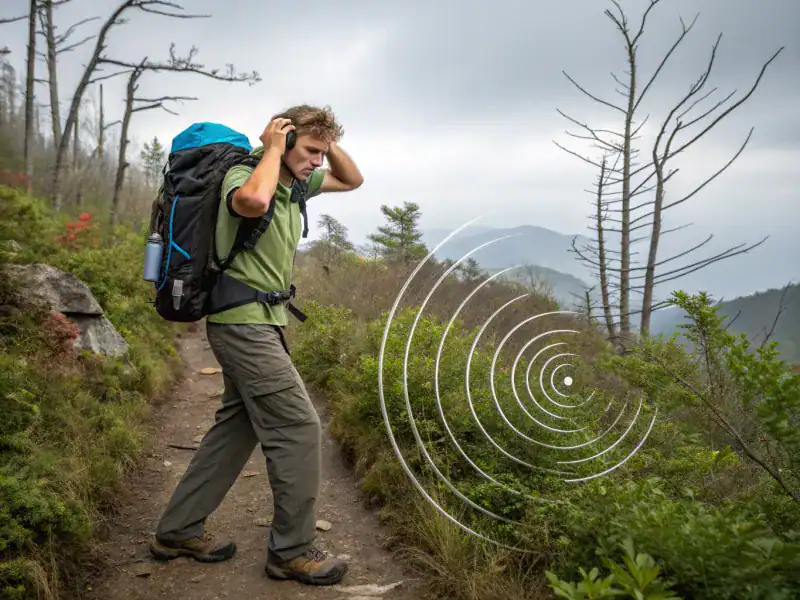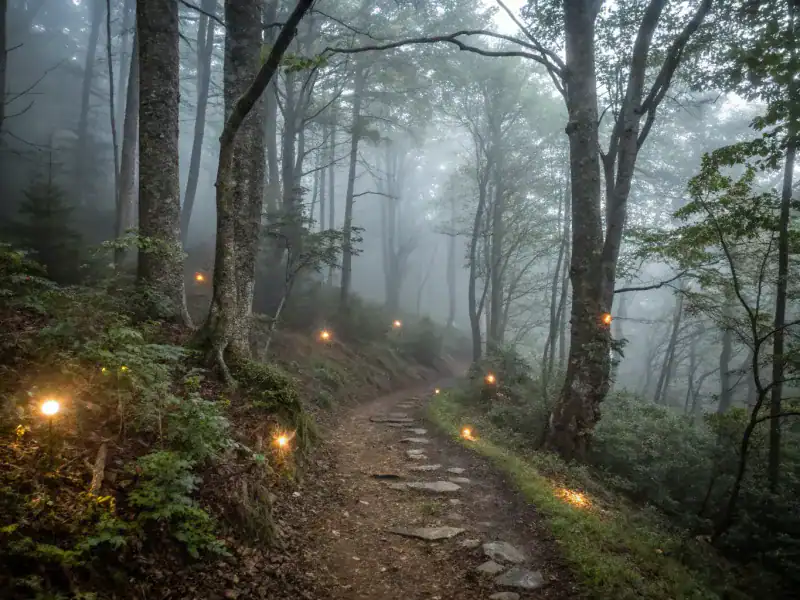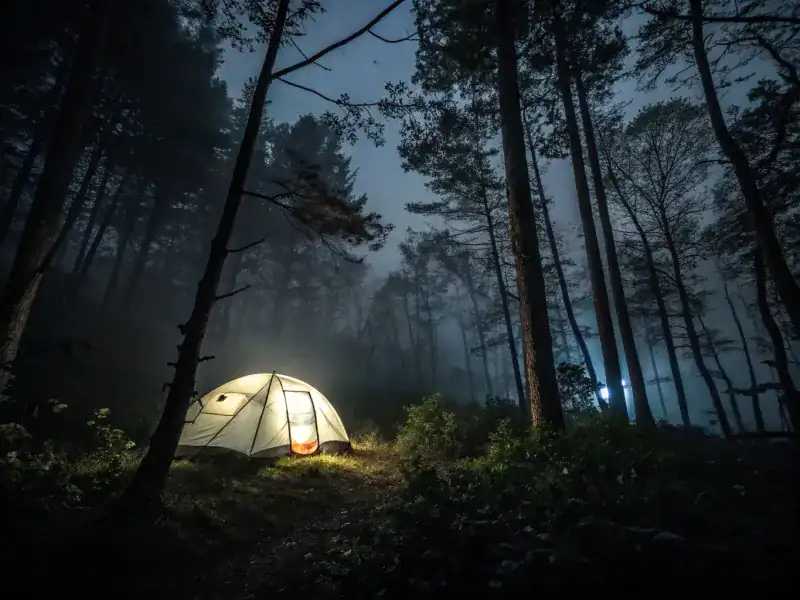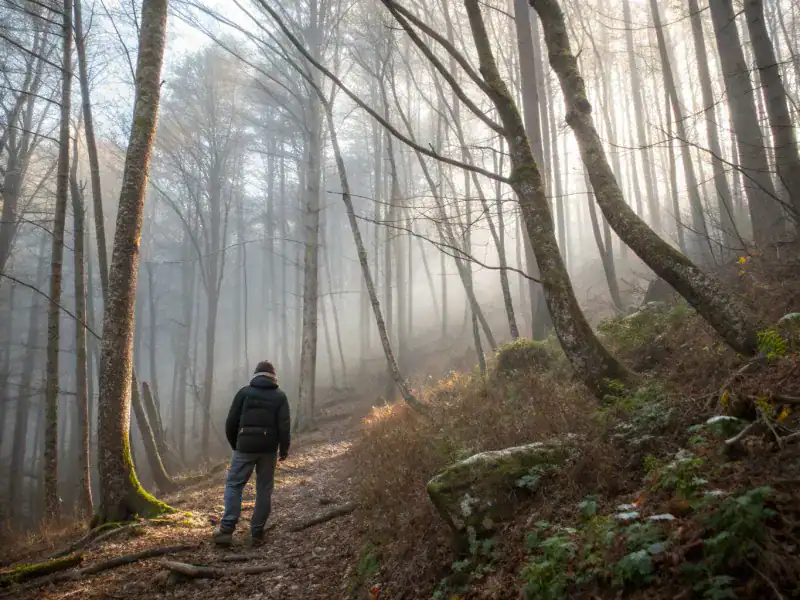The Appalachian Mountains hide secrets beyond their majestic beauty. Hikers and campers often focus on bears and weather, but locals know there are stranger dangers lurking in these ancient hills.
From unexplained sounds to eerie phenomena, these mountains have inspired countless tales that blur the line between folklore and genuine warnings.
Whether you’re planning a weekend hike or extended camping trip, these are signals from the wilderness you should never dismiss.
1. If it wears your face it wants more than your fear
Hikers and locals occasionally report encountering someone who looks exactly like a friend or family member in remote areas. These doppelgangers appear normal at first glance but behave oddly when approached.
Mountain communities have passed down warnings about these entities for generations. The mimics are said to study humans before taking their appearance, but they can’t perfectly replicate personality or memories.
If someone familiar seems off—standing too still, speaking mechanically, or asking strange questions about your plans—trust your instincts and leave immediately. These encounters typically happen at dusk when visibility is poor and travelers are tired.
2. Feral laughter in the mountains is never playful
Strange laughter echoing through mountain valleys might seem like distant hikers having fun, but locals know better. This unnerving sound, often described as high-pitched and frantic, has been documented by multiple hikers and campers throughout the region.
Wildlife experts suggest some animal calls can sound remarkably human-like. Foxes and certain owls produce vocalizations that resemble maniacal laughter, especially when sounds bounce off rock faces.
However, Appalachian folklore speaks of more sinister origins. If you hear laughter that raises the hair on your neck, especially after dark or during fog, don’t call out or investigate. Return to safety and wait until daylight.
3. When the mountains go quiet, it’s not peace, it’s a warning
Experienced outdoorspeople recognize that sudden silence in the forest signals danger. Birds, insects, and small mammals create constant background noise in healthy ecosystems, and their collective quiet means they’ve detected a threat.
This natural warning system evolved over millennia. When predators approach, the forest’s regular inhabitants fall silent to avoid detection.
Mountain guides recommend stopping immediately when you notice unnatural silence. Listen carefully, scan your surroundings, and consider backtracking. Many hikers report this eerie quiet preceding encounters with bears, mountain lions, or severe weather. Trust this ancient alarm system—it existed long before humans walked these ridges.
4. A baby crying in the woods isn’t a baby
The sound of an infant crying deep in the forest is one of the oldest tricks in nature’s book of deceptions. Various predators, including mountain lions and certain birds, can mimic human baby cries with disturbing accuracy.
Local rangers report multiple incidents where hikers followed these sounds, becoming hopelessly lost or wandering into dangerous territory. The phenomenon has roots in both natural science and regional folklore.
If you hear a baby crying where no child should logically be, don’t investigate alone. Instead, return to your group or campsite, make noise to establish your presence, and report the incident to park authorities when safely possible.
5. The louder it sounds, the quieter you need to be
Mysterious, thunderous noises sometimes roll through Appalachian valleys, growing louder rather than fading. Rangers attribute some to natural phenomena—rock slides, distant storms, or even the mountains themselves settling.
Old-timers tell different stories. They caution that unnaturally persistent sounds serve as lures, drawing curious hikers away from safety. These sounds reportedly change direction, seeming to come from everywhere at once.
Your best response is counter-intuitive: become as quiet as possible. Avoid calling out or making noise that reveals your location. Find a secure spot and wait until the sounds pass naturally. Many who’ve experienced this phenomenon report the sounds eventually move on when ignored.
6. If eyes shine too bright in the dark, you need to back away slowly
Animal eyes reflect flashlight beams in the darkness—a normal occurrence in the woods. However, experienced guides warn about reflections that seem unnaturally bright or numerous.
Most woodland creatures display specific reflection patterns and colors. Deer eyes show greenish-yellow, while coyotes and wolves reflect greenish-blue. When you spot reflections that appear too large, too bright, or in impossible patterns, something isn’t right.
Never run if you encounter unusual eye-shine. Predators instinctively chase fleeing creatures. Instead, back away slowly while maintaining eye contact, speak in a calm, firm voice, and make yourself appear larger. Many mountain residents keep bells on their packs specifically to avoid surprising whatever watches from the darkness.
7. If it sounds close, it’s already too late
Sound travels strangely in mountain terrain. What seems distant might be right beside you, while nearby noises can sound far away. This acoustic distortion has led many hikers into dangerous situations.
Mountain rescue teams report cases where people walked directly toward hazards, misjudging distance based on sound alone. The dense forest, rocky outcroppings, and changing elevations create natural amphitheaters that amplify or muffle noises unpredictably.
Local wisdom suggests treating all unusual sounds as potentially immediate threats. If you hear something concerning but can’t identify its source or direction, stay put and assess your surroundings carefully. Experienced guides recommend using visual confirmation whenever possible before moving toward any sound in the mountains.
8. Lights on the mountain path don’t always lead you home
Mysterious lights have been reported throughout the Appalachians for generations. Sometimes appearing as lanterns, flashlights, or glowing orbs, these phenomena have scientific explanations ranging from bioluminescent fungi to methane emissions.
However, countless stories tell of disoriented hikers following these lights, believing them to be fellow travelers or rescue parties, only to find themselves in treacherous terrain. The infamous “will-o’-the-wisp” appears in folklore worldwide as a dangerous lure.
Experienced guides recommend never following unexpected lights in the wilderness. Instead, stay on marked trails and trust your map and compass. If separated from your group at night, remaining in place until daylight is safer than pursuing mysterious illuminations through unfamiliar territory.
9. Coyotes laughing isn’t always coyotes
The yipping, howling sounds of coyotes echo through Appalachian nights regularly. These familiar calls provide comfort to some campers—a normal part of the wilderness soundscape.
Trackers and hunters, however, note subtle differences between typical coyote vocalizations and something that merely approximates them. True coyote calls follow patterns, responding to each other from different locations as the pack communicates.
When the laughter seems wrong—too rhythmic, coming from a single location, or mimicking human speech patterns—experienced outdoorspeople recommend securing your campsite immediately. Native American traditions across the region speak of trickster entities that use familiar animal sounds to lure the unwary. Whatever your beliefs, treating unusual sounds with caution costs nothing.
10. If nature goes quiet, you’re probably the only thing not hiding
Forest creatures communicate constantly through sounds we barely notice. This natural symphony creates background noise that experienced hikers recognize as normal and healthy.
When this chatter suddenly stops, every animal in the vicinity has detected something threatening. Their instinctive response is to freeze and hide—knowledge passed through evolutionary adaptation.
Rangers advise mimicking the forest’s wisdom when silence falls. Find cover, stay still, and observe your surroundings carefully. This reaction has saved countless lives from flash floods, predators, and falling trees. The mountains speak clearly to those who listen—and sometimes their most important message is absolute silence, nature’s universal warning sign.
Lover of good music, reading, astrology and making memories with friends and spreading positive vibes! 🎶✨I aim to inspire others to find meaning and purpose through a deeper understanding of the universe’s energies.

